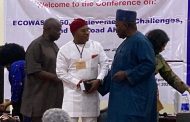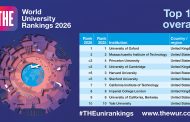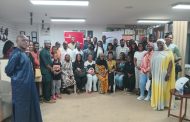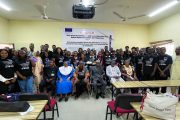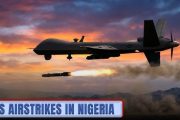It didn’t start today. Violent conflicts narrated as identity sparks have defined the Fourth Republic. From the OPC intervention in the June 12 debacle to the formation of violent youth groups such as Bakassi Boys, Egbesu Boys and then the emergence of MEND and its insurgency before the country landed in Boko Haram in the aftermath of the violent tussle over the declaration of Sharia in many states in the north, the Fourth Republic has been violent conflict, violent conflict and violent conflict. In each case, the government of the day would say it knows those behind each of such violence but it never arrests anyone, much less convict anyone for being a merchant of violence. Nigeria remains the only country where to threaten fire and brimstone is a way of attracting attention, followed by being compensated. As it became clear to everyone that promoting violence is such a lucrative thing, many interest groups became involved. In the last five or so years, this has been the reality across Nigeria.
Many would, however, argue a distinction between the nature or pattern of violence in the Southern part of the country and the Northern part. In the South, most are violent, organised groups who think violently challenging the state is a way of seeking concession on the issue after their mind. From OPC to Egbesu to Bakassi Boys to MEND, Avengers and even IPOB, this is the case. They are no less a threat to stability but the threat is a more straightforward category: police or military action to suppress such threats where dialogue and negotiation fail. In the north, the nature of violence is completely different and impossible.
Conflicts of extreme cruelty and psycho – social, economic and political damage have taken place but which are not amenable to state intervention, be it in peace keeping, peacemaking or post conflict peacebuilding. As soon as each violent conflict is narrated as ethnic or religious or tribal or indigene/settlers, the room for government intervention is automatically closed. Every Nigerian government functions in a way that does not free it of suspected capture by the ethno-religious identity of the Commander-in-Chief. How this view of government came about or continues to predominate is part of the complexity of the Nigerian federation. Perceived as such, every government is careful or even fearful of doing what is right in response to punishing promoters of violence, real and imagined because ‘what is right’ in all such situations rests in the eye of the beholder.

The Nigerian crisis is such that the Police is suspected by one side or the other in every intervention to keep the peace. Beyond the suspicion, the Police as an institution carry so much baggage
Now, this has reached a situation where violence is soaking Northern Nigeria. In the last one year or so, the series of violence in Jos Plateau subsided to give way to Agatu, then Southern Kaduna, Zamfara, Benue and then back to Jos Plateau again. All these are still there but it appears to be settling in Taraba State as the new headquarter of violence in the North. In late June 2017, it was around Gembu and Mambilla in Sardauna Local Government Area of the state. Now, it has moved to Numan, a replay that a Professor of Sociology and an expert in conflict Studies called genocide. That word has been used too often that it has lost its capacity to shock. But the pictures from that confrontation are truly horrendous. Not that any of such recent inter-group encounters around the North have been any less horrendous but that doesn’t make the horrendous nature of this particular one right.
What has the government, Federal and state, done? They have set up an investigation. If the past is a guide in this regard, it is likely to be the last anyone hears of it. There are reports of many such panels, commissions, etc by which governments made everyone forgot about violence as an anomaly. That is why this newspaper’s headline in the aftermath of Mambilla violence last June is “Where Next After Mambilla? Northern Nigeria at Risk”. The headline can be changed to “Where Next After Numan? Northern Nigeria at Risk” and the North would still be caught flat footed.
As long as the violent conflicts are defined as ethno-religious or inter-tribal instead of as acts of violence and a challenge to the state, so long would no government or players be able to resolve these conflicts. By calling them ethno-religious, they are framed as identity conflict or conflict which have taken sacred forms. As what is sacred to some is profane to others, such frames dis-empower temporal authorities from resolving the conflict, no matter how fair or just the leaders of government might be.
The danger, however, is that the level of violence is exceeding acceptable limits. Anyone can fall victim now. Any society that has no mechanism for measuring the threat hidden in the scale of violence in Northern Nigeria today runs a big risk. The North runs that risk now. But, who will bell the cat, the cat called violent inter-group violence unique to Northern Nigeria in recent years, involving extra-ordinarily violent or classical scorched earth raids?




